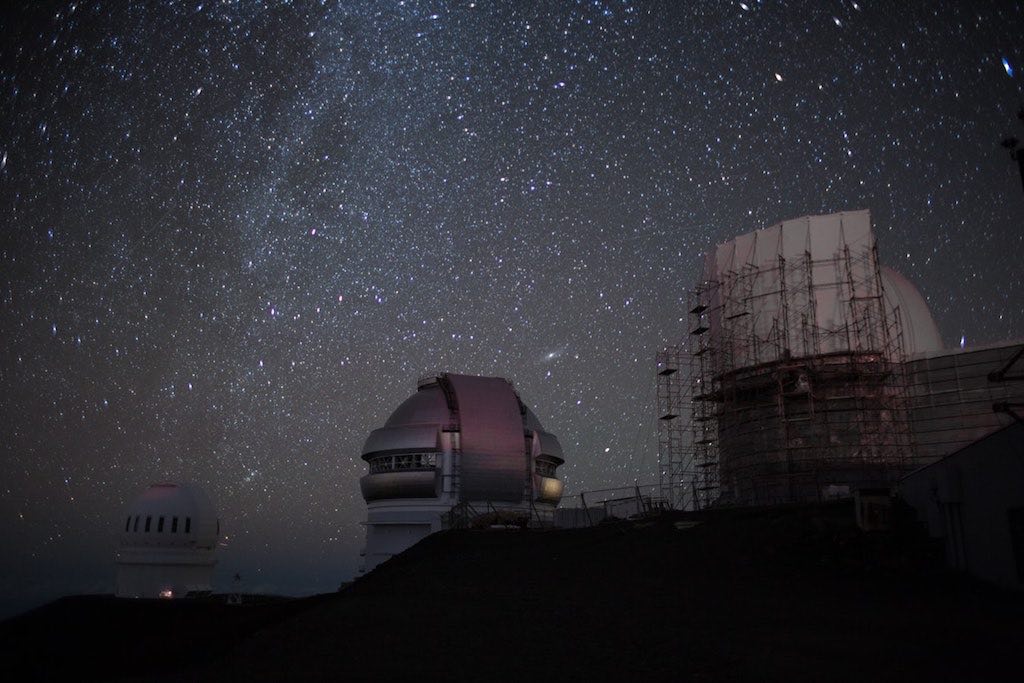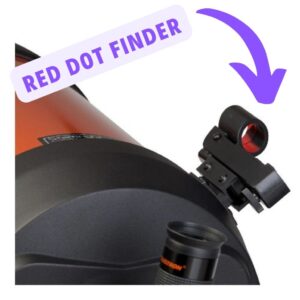This site contains affiliate links to products. I may receive a commission for purchases made through these links.
You may wonder why astronomers choose to build large observatories on mountaintops rather than at lower elevations near sea level, where transporting telescopes would be less challenging. There are several reasons behind the decision to construct the world’s best and largest telescopes on mountain peaks.
Observatories are situated on mountaintops primarily because higher elevations offer advantages related to atmospheric conditions. At greater heights, there is a thinner atmosphere, resulting in drier air with reduced water vapor content. This lower water vapor reduces the refraction and scattering of light, resulting in less distortion in observations. Additionally, cleaner air at higher elevations leads to decreased atmospheric turbulence, which can also cause image distortion.
While the advantages of mountain observatories are clear, it’s essential to explore both their benefits and limitations comprehensively to understand why these sites are chosen as the ideal locations for some of the world’s most advanced telescopes.
The advantage of high altitude observatory
The big advantage of having a telescope on top of the mountain is to be above the clouds. Most of the observatories are built high enough to be above the middle cloud layer so they have clean nights to observe the universe even if it’s cloudy in the area below the mountaintop.
Sometimes, you have weeks of nothing else but clouds that are preventing you from using your telescope. Of course, it depends on the area and the place in the world where you live, but generally, you will get clouds if you are not high enough.
Observatories are expensive facilities with telescopes worth millions of dollars so astronomers have to be able to use them as often as possible. They can not wait for weeks for clear nights.
Atmospheric turbulence
Another big factor in this topic is atmospheric turbulence. You may know it as star twinkling. When you look up to the sky at night you will notice that the stars are twinkling. In fact, they are not. The twinkling is caused by atmospheric turbulence that distorts the light coming from the stars through the atmosphere. This is not good for observing the universe with the telescope. In higher elevations, the air is cleaner and with less water vapor. And because of the less atmosphere, there is less turbulence. The result is the image much clearer compared to the image seen by the telescope near the sea level.
However, there is always some atmospheric turbulence present even at the highest observatories. To overcome this problem, we also have telescopes in space where there is no atmosphere and the image is perfect. To overcome this problem on the ground, scientists developed a new technology for telescopes to fight atmospheric turbulence called adaptive optics.
Why do observatories use lasers – adaptive optics
Observatories often utilize lasers, particularly orange ones, in their astronomical pursuits. You may have seen images of telescopes with these lasers pointed toward the night sky. While smaller telescopes might employ lasers as guiding scopes for alignment, larger observatories have a different purpose for them.
These observatories make use of a technology called adaptive optics, which plays a crucial role in their laser usage. Telescopes equipped with adaptive optics feature complex mirrors controlled by computers. These mirrors are capable of real-time corrections to counteract the effects of atmospheric turbulence, improving the clarity of observations.
To enable this correction process, a bright reference star close to the target object is essential. Astronomers create this reference star artificially by projecting an orange sodium laser into the upper layers of the atmosphere, where it functions as a synthetic reference point. Adaptive optics requires a very bright reference star in the sky that is close to the object of interest. This bright reference star is produced by shooting an orange sodium laser into the top layer of the atmosphere where it glows as an artificial reference star.
The recent telescopes with adaptive optics are 10 times sharper than the Hubble space telescope not only because of the adaptive optics but also because of the size. Hubble’s telescope mirror is only 2 meters in diameter. The planned TMT (Thirty Meter Telescope) on the Manua Kea in Hawaii will have a mirror with a diameter of 30 meters.
What factors must be considered when choosing a sight to build an observatory?
Finding the best location for the new observatory has a lot of factors to consider. Observatories can have optical telescopes but also radiotelescopes and there are different requirements. But because we are talking about observatories with optical telescopes, here are some factors to consider for the location.
- Altitude – of course, the higher is better. Less atmosphere is the goal, so the higher we go the better conditions we can experience.
- Dry Climate – a dry climate provides good air clarity and no light distortion caused by water vapor. One of the best locations is in the Atacama desert in Chile because it is high enough and there is almost no rain during the year.
- Light Pollution – is a very important factor because even if you have a high altitude and dry climate but there is a big city nearby, it is not going to work out. In general, observing with the telescope even on the amateur level requires a dark sky away from light pollution. Remote locations are the best.
- Politics – this may sound weird but you need full access to the site. Also, you don’t want to build an observatory near the war zone. The country where the observatory will be situated also donates a lot of money to have the telescope and the prestige.
- Latitude – this is also a very important factor because the southern and northern hemispheres are different skies and you want to build an observatory to see a particular part of the sky.
- Access – you need to consider access to the site. Transporting a big telescope to the top of the mountain is a tricky task.
These are only a few requirements that astronomers have to consider before picking the right location. It is a long and expensive process.
Altitude hazards for astronomers
Having the observatory at a high altitude is perfect for astronomy but on the other hand, there are risks for astronomers and other workers that have to spend a long period of time there. Let’s use the observatory on Manua Kea in Hawaii as an example to explain some of the hazards connected to working at high altitudes.
Altitude sickness
The observatory’s elevation is 13,796 feet (4,200 m). In general, the risk of altitude sickness starts above 3000m. There is 40% less atmospheric pressure compared to the sea level. So, less oxygen is available which can cause drowsiness, headaches, shortness of breath, nausea, and poor judgment.
High altitude sickness is hazardous for people in poor physical condition so every employee is medically examined before entering the site. Visitors, children under 16 years of age, pregnant women, or people with respiratory or heart problems are advised not to travel beyond the Visitor Information Station which is an elevation of 3000m.
High altitudes can also cause pulmonary edema (fluid in the lungs).
Eye damage and sunburns
Because the site is at a high altitude with less atmosphere blocking the ultraviolet radiation, the sun is very dangerous especially when there is snow on the ground. It can cause sunburns and eye damage so people are advised to wear sunglasses and use protective clothing and sunscreen.
Weather hazards
The weather can change quickly and cause winds over 100 miles per hour, freezing temperatures, and snowstorms.
Remote location
Working in a remote location at a high altitude is not easy. The emergency services can be two hours away. And during the bad weather, it is even worse.
The role of mountain-perched observatories in astronomy
Mountaintop observatories play a crucial role in astronomical research for several compelling reasons. Their high-altitude locations provide less atmospheric interference, resulting in clearer observations.
Moreover, the reduced turbulence and minimal light distortion contribute to superior image quality.
These advantages, combined with cost-effectiveness compared to space-based telescopes, make mountaintop observatories indispensable for expanding our understanding of the universe.
Don’t forget to subscribe to our newsletter where you’ll find the latest cosmic discoveries, expert stargazing tips, and exclusive subscriber deals. Embark on your cosmic journey if you haven’t already!
Read also:




